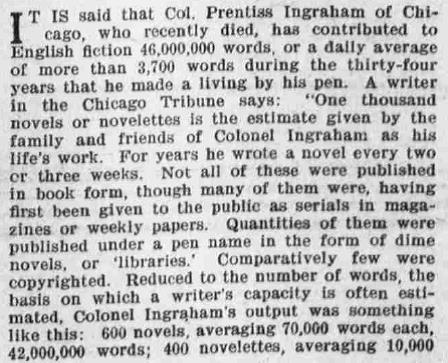The son was born near Natchez, Mississippi, on December 28, 1843. He began his formal education at St. Timothy's Military Academy in Maryland, where John Wilkes Booth was a classmate. Then Ingraham returned to Mississippi and further education at Jefferson College in Washington. Founded in 1811 in the Mississippi Territory, that school operated almost continuously in one form or another until finally closing in 1964.
After college Ingraham enrolled at the Medical College of Alabama, which had opened in November 1859, thus making his appearance in Alabama. The Civil War interrupted his education there, and he enlisted in Wither's Mississippi Regiment. He rose to the rank of lieutenant and suffered wounds at Port Hudson and the Battle of Franklin.
After the war Ingraham spent several years as a soldier of fortune in hot spots around the world. He served under Juarez in Mexico during the rebellion against Maximillian; with Austrian forces in their war with Prussia; in Crete against the Turks, in the Khedive's army in Egypt, and in both the Cuban army and navy. In Cuba he was captured by Spanish forces and sentenced to death, but managed to escape.
Perhaps tiring of all this activity, Ingraham had settled in London around 1870. Here he began his first attempts at writing stories and satiric sketches. Finding little success, he had moved to New York City by 1875. There he met and married Rose Langley, an author, composer and artist. They would eventually have a son and two daughters.
Ingraham continued writing in New York City, but by 1881 the wanderlust apparently returned. He headed west, where he encountered Buffalo Bill Cody among others. He soon joined Cody's Wild West Show. He also met the Powell brothers Frank, George and Will. Ingraham would later write fiction based on the lives of all these men.
Ingraham's first dime novel, The Masked Spy, had appeared in 1872. After his western adventures, he and his family lived in Easton, Maryland, and Chicago until his final days at the Beauvoir Confederate Home in Biloxi, Mississippi. During this period Ingraham wrote vast amounts of fiction.
He is said to have written 600 novels and 400 short novels issued by dime novel publisher Beadle and Adams and others. Ingraham wrote under his own name as well as a number of pseudonyms. He claimed to have written a 70,000 word novel in a week. Some of his novels were leaner revisions of his father's florid novels.
E.Z.C Judson, writing as Ned Buntline, is credited with discovering Buffalo Bill and writing the first novels about him. Yet Ingraham wrote dozens of novels about Cody and is primarily responsible for creating the legendary character.
Examples of some of Ingraham's Buffalo Bill novels can be seen below, along with some on other subjects. A few novels can be found online here and here. More information about Ingraham can be found here and here. A master's thesis by Phyllis J. Gernhardt, "Prentiss Ingraham and the Dime Novel" was completed at Ball State University in 1992. He really deserves a full biography.
Ingraham died at the Confederate home on August 16, 1904, of Bright's disease. He is buried in the cemetery on the grounds of Beauvoir, formerly the home of Jefferson Davis. The home was extensively damaged by Hurricane Katrina.
The Find-A-Grave entry for Prentiss is here [note misspelling of first name on the gravestone] and his father's is here.
Unless otherwise noted, cover images are from Texas Tech University's Southwest Collection Archive.
Source: Wikipedia
Source: Mississippi History Now
Source: eBay
Source: Etsy.com
"One of his most historically interesting protagonists appears in “Darkie Dan, the Colored Detective; or, The Mississippi Mystery” in an August 1902 edition of the The New York Dime Library. Beadle & Adams originally printed the story in 1881. Manumitted after saving his young mistress from a pack of wolves, Dan remains in faithful service to the Mississippi planter family, rescuing them from many trials involving the villainous criminal known as the “King of Diamonds.” Dan is one of the earliest African-American protagonists of the mystery genre, if not the first."
Source: University of Mississippi library exhibit
You can read the full text here.
Source: The Commoner [Lincoln NE] 16 September 1904











